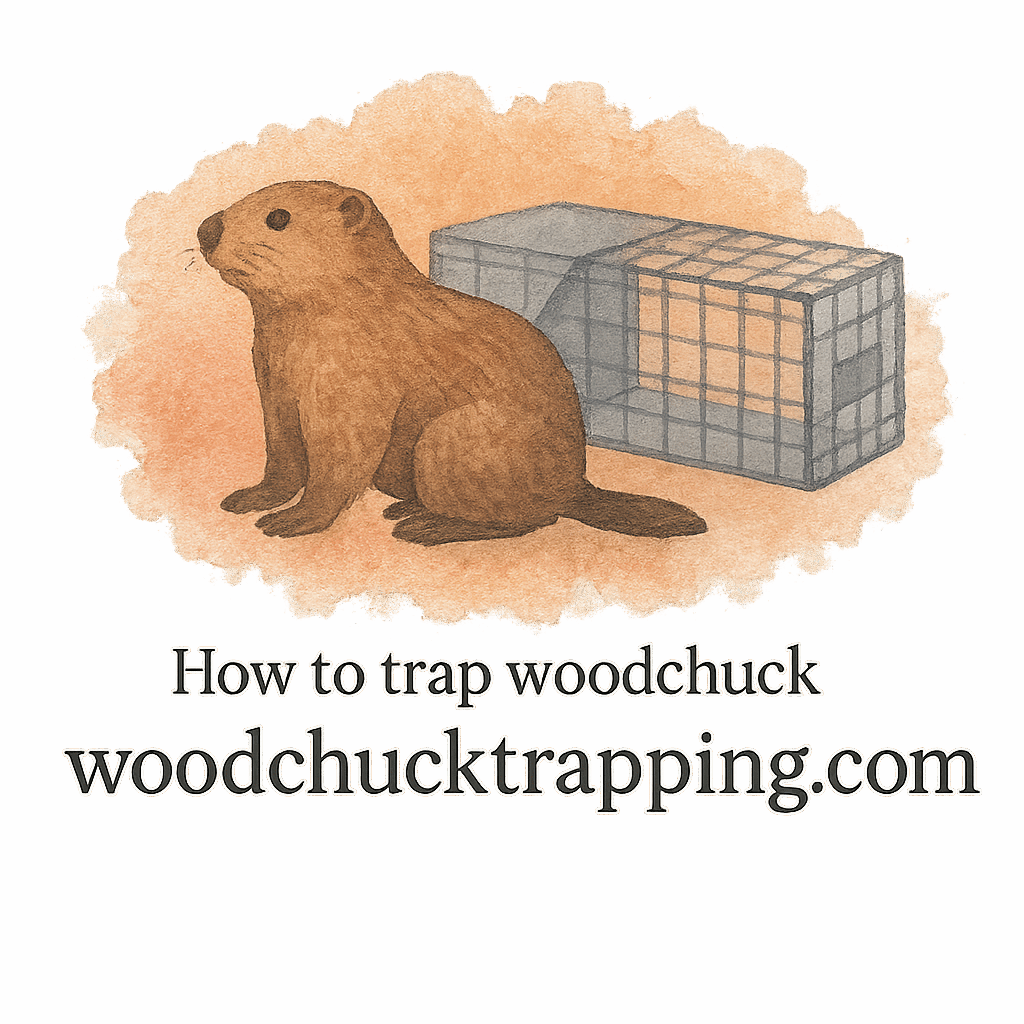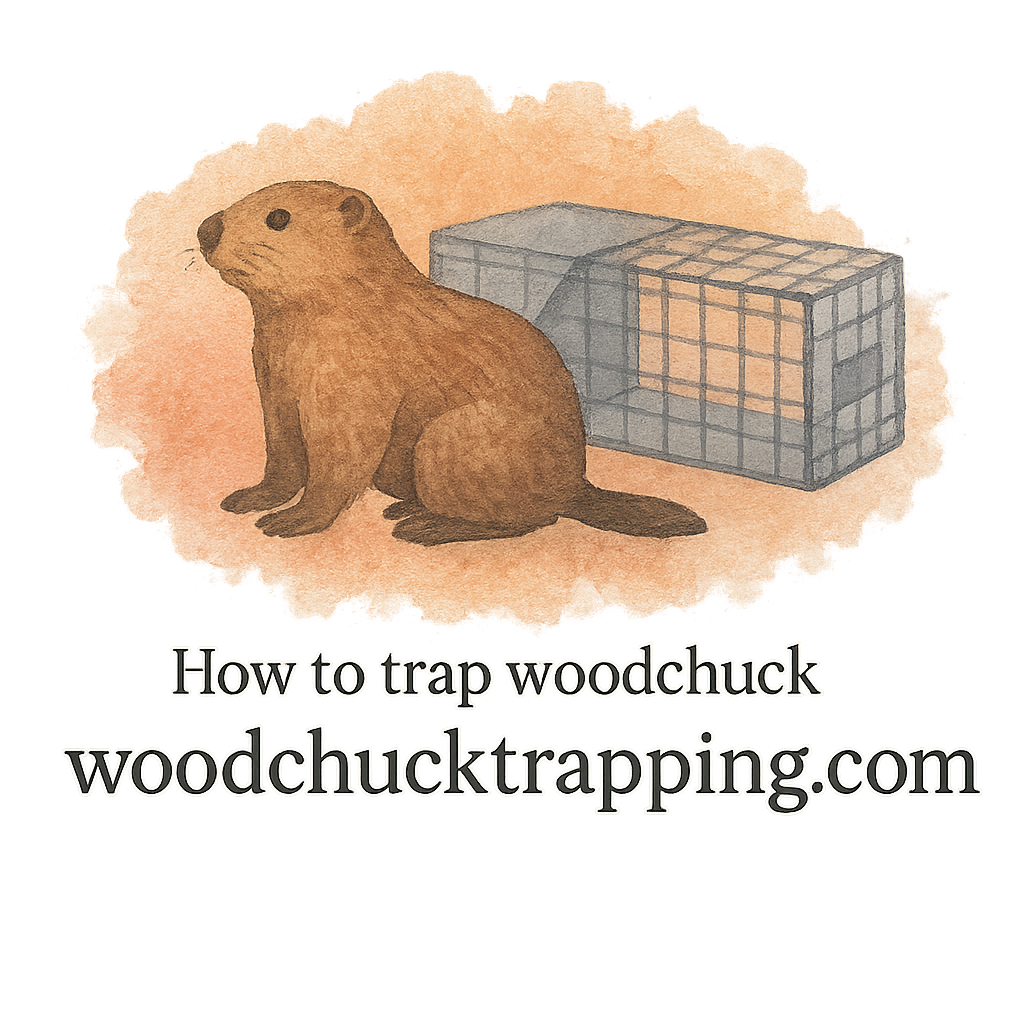Introduction
If you’ve ever walked outside and noticed your garden full of holes or plants mysteriously eaten, chances are a woodchuck (also called a groundhog) has made itself at home nearby. Trapping these critters can feel like a puzzle—you want to get rid of the problem, but you also want to do it in a humane way. That’s where troubleshooting your approach to humane woodchuck trapping techniques comes in.
In this guide, I’ll walk you through nine practical ways to troubleshoot woodchuck trapping, along with tips on baiting, placement, safety, and long-term prevention. Ready to outsmart the burrow boss? Let’s dive in.
Understanding Humane Woodchuck Trapping
Why Humane Trapping Matters
Humane trapping ensures that you’re removing the animal safely without causing unnecessary harm. It’s not just about being kind—it’s about being effective. A stressed woodchuck may avoid traps altogether. By focusing on humane trapping techniques, you increase your success rate while staying compliant with laws and safety.
Common Challenges in Woodchuck Trapping
Even experienced trappers run into issues like:
- Woodchucks avoiding traps.
- Traps failing to trigger.
- The wrong bait not attracting attention.
- Animals escaping after being caught.
Troubleshooting these challenges will make the difference between a failed attempt and a successful, humane capture.
1. Choosing the Right Trap for Woodchucks
Compact Traps vs. Larger Traps
Woodchucks are hefty animals, so selecting the right size trap is essential. Smaller traps may not trigger properly, while overly large traps might intimidate the animal. Consider compact traps designed specifically for medium-sized critters.
Reviewing Essential Trap Gear
Before you set anything up, make sure your equipment is in good condition. Explore trap gear reviews to choose reliable models that won’t fail you in the middle of the job.
2. Setting Traps in the Right Location
Identifying Burrows and Signs of Activity
Woodchucks leave behind clear evidence: burrows, droppings, and gnawed plants. Setting your trap directly near an active entrance is one of the most effective ways to increase your odds.
Positioning Traps in Small Yards
If space is tight, you’ll need to optimize placement. In small yards, position traps along travel paths or near garden edges.
3. Using Effective Bait and Lures
The Role of Scent-Bait and Trap Scent
Woodchucks rely heavily on smell. That’s why using scent-baits or adjusting the trap scent can make or break your setup.
Common Food Lures for Success
Fresh fruits like apples, or vegetables like carrots and lettuce, are tried-and-true. For detailed strategies, check the baiting and luring guide.

4. Minimizing Human Scent on Traps
Importance of Gloves and Handling Techniques
Your scent is like a neon warning sign to a cautious woodchuck. Always wear gloves when handling traps and bait. Learn more about safe handling techniques to avoid tipping off your target.
5. Timing Your Trapping Efforts
Seasonal Considerations
Spring and early summer are prime times since woodchucks are more active above ground. In late fall, they start prepping for hibernation, making them harder to trap.
Best Times of Day for Trapping
Woodchucks are most active in the early morning and late afternoon. Setting your traps during these peak windows increases your chances.
6. Preventing Trap Malfunctions
Maintaining Equipment and Tools
Nothing’s more frustrating than a trap that won’t spring. Regularly clean and maintain your tools to prevent rust and dirt buildup.
Safety Checks Before Setting Traps
Always perform a quick check before deploying traps. Review essential trapping safety steps to avoid accidents.
7. Handling a Trapped Animal Humanely
Reducing Stress on the Animal
A trapped animal can panic quickly. Covering the trap with a cloth can calm the woodchuck until relocation.
Following Laws and Safety Guidelines
Relocating wildlife isn’t just about compassion—it’s also the law. Review laws and safety requirements in your area before moving a trapped woodchuck.
8. Preventing Future Infestations
Yard Damage Prevention Strategies
Once you’ve successfully removed a woodchuck, the last thing you want is a repeat invasion. Learn effective yard damage prevention methods like fencing and repellents.
Blocking Access to Burrows
Seal old tunnels and monitor for new digging activity. You’ll find plenty of advice under burrow management.
9. Learning From Trial and Error
Tracking Techniques and Results
Keep notes on what works and what doesn’t. Whether it’s trapping techniques or bait preferences, logging results helps refine your approach.
Improving Your Trapping Skills
Like any skill, trapping takes practice. Explore resources on trapping essentials, how to trap, and humane methods to stay sharp.
Conclusion
Trapping woodchucks humanely doesn’t have to be frustrating. By troubleshooting your approach—whether it’s choosing the right trap, perfecting your baiting strategy, or preventing future infestations—you can outsmart even the cleverest burrow dweller. Remember: patience, observation, and compassion are your best tools.
If you want to dive deeper into advanced tips and gear, check out the full woodchuck trapping guide.
FAQs
1. What’s the most effective bait for woodchucks?
Fresh vegetables like carrots, lettuce, and apples usually work best.
2. Can I reuse the same trap after catching a woodchuck?
Yes, but clean it thoroughly to remove old trap scent.
3. Are woodchucks dangerous to humans?
They’re generally shy, but they can cause significant yard damage if left unchecked.
4. How do I know if a burrow is active?
Look for fresh dirt piles, tracks, or gnawed plants around burrows.
5. Is relocation always legal?
Not always—check local laws and safety before relocating trapped animals.
6. Can traps harm woodchucks?
Not if you use properly designed humane traps.
7. What if trapping doesn’t work?
Consider reinforcing your strategy with fencing, repellents, or consulting professional trapping services.


